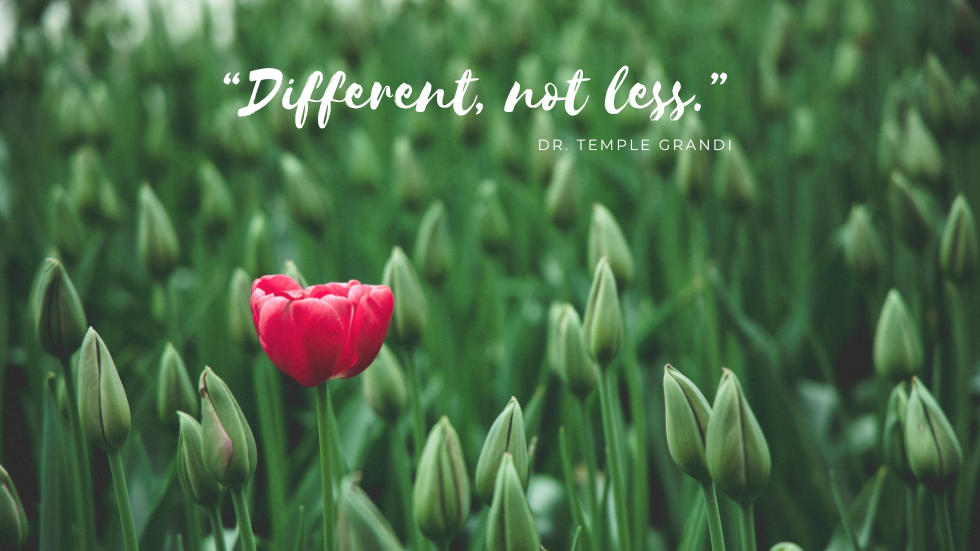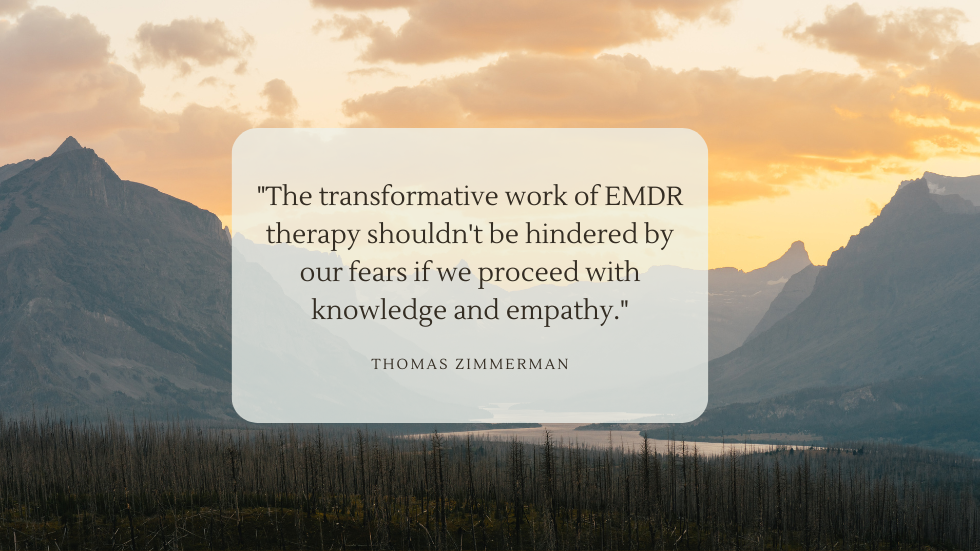
Blog

Bilateral Stimulation for Emotional First Aid
Bilateral stimulation (BLS) isn’t just for trauma reprocessing, it can also be a helpful self-regulation tool between sessions. In this blog, I explore how EMDR therapists can teach clients to use BLS for emotional first aid, using simple analogies and strategies that support nervous system regulation. When introduced thoughtfully, BLS can increase client confidence, foster a sense of safety, and ease the transition into deeper EMDR work.

Being Creative in EMDR Resourcing
While the 'calm place' visualisation is a staple in EMDR resourcing, it doesn’t work for everyone. In this post, I explore creative, sensory-based alternatives that support a wider range of clients including those who find visualisation difficult or prefer more concrete tools. Whether it’s a favourite song, a comforting object, or a shared interest, resourcing in EMDR therapy can be tailored to meet clients exactly where they are.

Rethinking Target Selection in EMDR
When it comes to EMDR therapy, choosing the “right” memory to target can feel like a daunting task, especially with clients who’ve experienced complex trauma. In this blog, I share why it can be more helpful to focus on patterns of experience rather than hunting for a single defining event. By thinking in terms of representative memories, we can more meaningfully connect target selection to the client’s goals and lived experience.

The Relational Heart of EMDR Therapy
EMDR therapy is more than protocols and procedures - it’s also deeply relational. For many clients, especially those with attachment wounds, healing begins with feeling safe in relationship. This blog explores how attunement, imaginative repair, and steady therapeutic presence can support EMDR reprocessing and foster meaningful, lasting change.

Demystifying EMDR: Talking to clients and colleagues with confidence
Explaining EMDR therapy can feel awkward at first—especially when you're waving your hands around and wondering if your client is taking you seriously. I still remember those early days, feeling a bit clunky and unsure. And I hear the same from many newly trained therapists I consult with. From using metaphors that make sense to managing scepticism gently, the blog offers grounded tips for everyday clinical conversations.

Neurodiverse-Affirming EMDR Therapy
Neurodivergent people are more likely to experience trauma, yet their distress is often misunderstood or overlooked. A neurodiverse-affirming approach to EMDR therapy acknowledges the impact of exclusion and masking, offering flexible, individualised adaptations like adjusted bilateral stimulation and clearer prompts.

EMDRAA accreditation: More than just a box to tick
EMDRAA accreditation isn’t just another credential, it’s a meaningful step towards deeper confidence and competence in your EMDR practice. Whether you’re newly trained or well into your EMDR journey, becoming an Accredited Practitioner or Consultant offers structured support, professional recognition, and space to reflect and grow.

Rethinking EMDR: A Group Program for EMDR Therapists
Discover how group EMDR therapy can offer a powerful, private, and supportive space for therapists to process, reflect, and reconnect. Explore the benefits of this innovative format designed specifically for EMDR clinicians.

From Awkward to Confident: Getting Started with EMDR Therapy
New to EMDR therapy? Learn how to grow your confidence, avoid common pitfalls, and integrate EMDR into your clinical style with support and clarity.

The Power of Imagination and Attachment
Imagination can be a valuable tool in EMDR therapy, particularly when working with clients who have experienced attachment trauma or neglect. By harnessing visualisation, therapists can guide clients in strengthening a sense of internal nurturance, safety, and the capacity to self-soothe.

The Benefits of Integrating Parts Work into EMDR Therapy
Clients often experience internal conflict during EMDR therapy - one part may be eager to process trauma, while another feels hesitant or resistant. Integrating parts work helps clients build awareness, reduce shame, and foster internal cooperation, making trauma reprocessing smoother and more effective.

Building a Bigger Boat: The AIP Model in EMDR Therapy
In EMDR therapy, the Adaptive Information Processing (AIP) model explains how unprocessed trauma causes distress. To process trauma effectively, clients need a strong adaptive capacity—a concept often described as “building a bigger boat.”

Adequately Activating Targets in EMDR Therapy
Adequately activating targets is important for the success of EMDR therapy. Through creative strategies and a thorough understanding of the client's defences, we can ensure that the targets are fully activated, setting the stage for effective and transformative EMDR reprocessing.

Addressing Client Ambivalence and Avoidance in EMDR Therapy
Client ambivalence and avoidance are common challenges discussed by EMDR therapists during consultation sessions. Integrating 'parts work' into the EMDR process can help clients overcome their defenses, engage with their emotions, and effectively reprocess traumatic memories.

Clarifying Expectations About EMDR Therapy
EMDR therapy is highly effective, but it’s not a one-session miracle cure. Each client’s journey is unique, and the duration and intensity of therapy will vary. By providing a clear and accurate picture of what EMDR therapy involves, we can help our clients approach EMDR therapy with a healthy mindset, ready to engage in the process and achieve lasting healing.

Balancing Resourcing and Trauma Reprocessing in EMDR Therapy
It's natural to feel apprehensive when addressing traumatic memories with emotionally vulnerable clients. However, it's important to recognise when our own anxiety might lead us to 'over-prepare' our clients in EMDR therapy. Being mindful of this can help ensure a balanced and effective approach.

Targeting Attachment Trauma in EMDR Therapy
Identifying target memories in clients with developmental or attachment-based trauma can be challenging. Thomas Zimmerman's 'topographic approach' provides a valuable tool for selecting targets when working with these clients.

EMDR Target Selection
EMDR target selection and sequencing can be tricky, especially when dealing with complex client cases. This is a recurring theme in my consultation sessions with EMDR therapists. Understanding where to begin, what to target, and in what sequence is never straightforward with complex clients, but I have some tips to help demystify this process.

Transitioning From Talk Therapy to EMDR
Getting started with EMDR therapy can feel unfamiliar and even uncomfortable at first. Some therapists struggle to transition from their usual style to a new therapy approach. Embrace the uniqueness of EMDR as a positive opportunity for clients to try something new. The results, as clients often discover, speak for themselves.

Creativity in EMDR Therapy
The journey of an EMDR therapist involves two key elements: mastering fundamental skills and embracing flexibility when needed. This duality within EMDR therapy, a structured approach coupled with scope to innovate, is one of the things that I love most about this amazing therapy. The key is finding the 'sweet spot' - staying grounded in EMDR basics while allowing space for creative adaptation.
